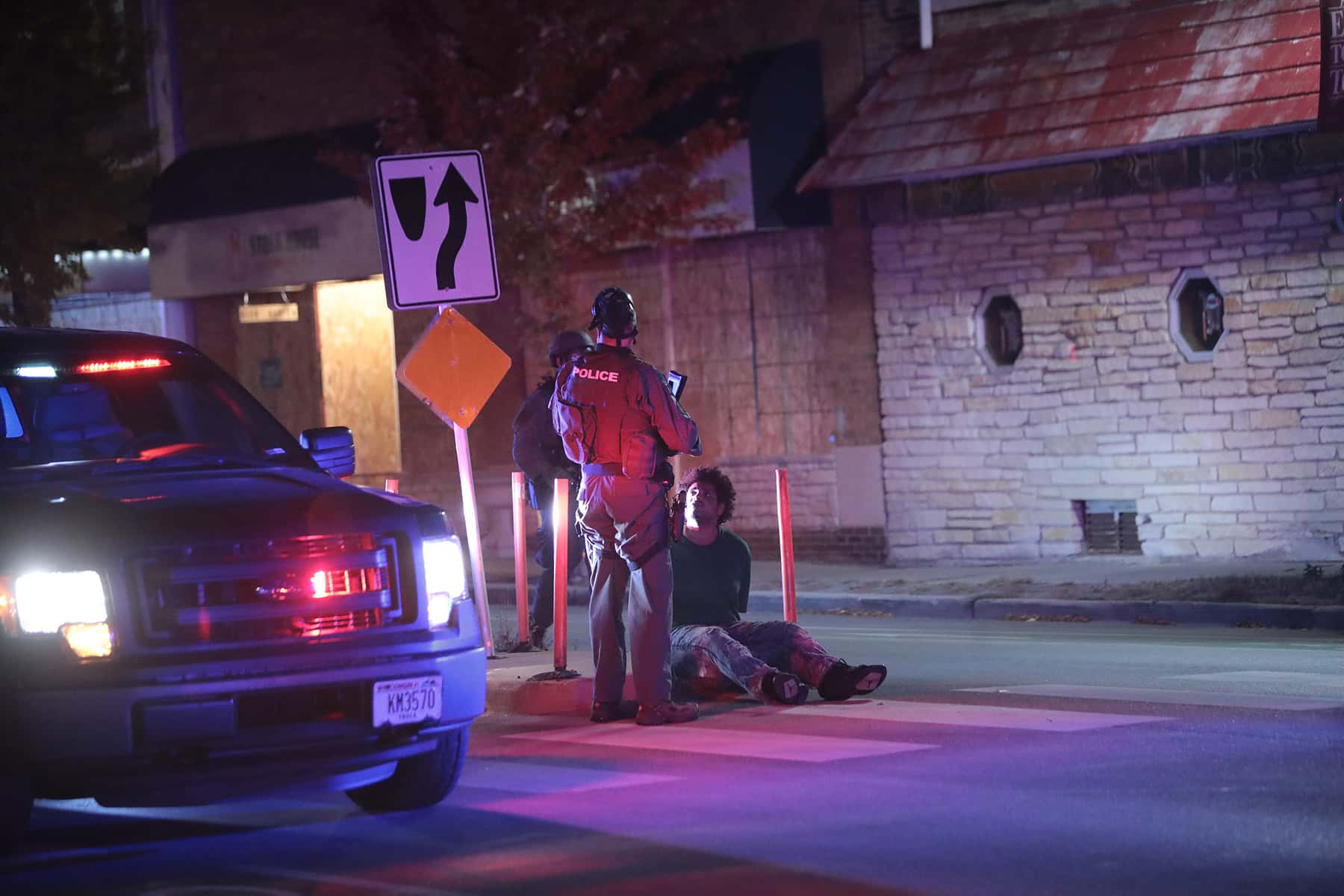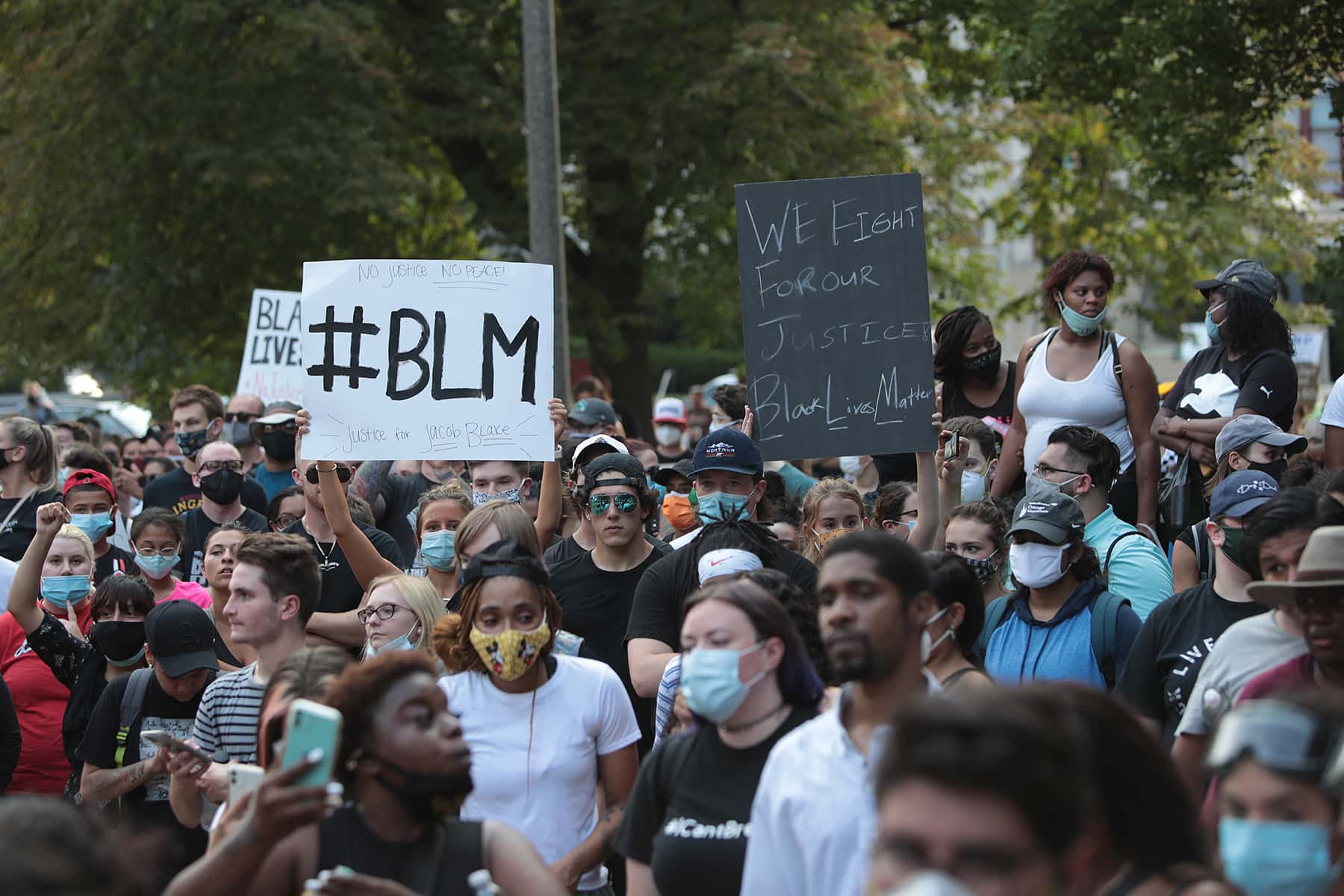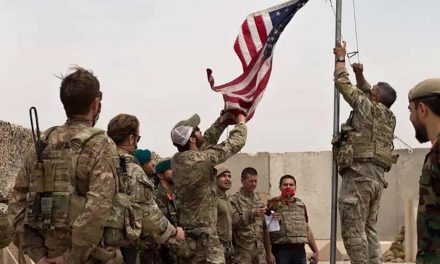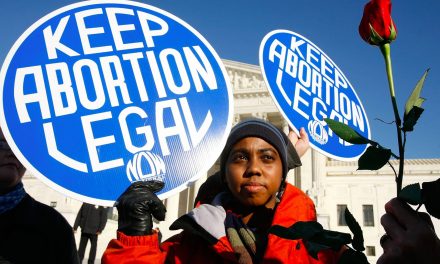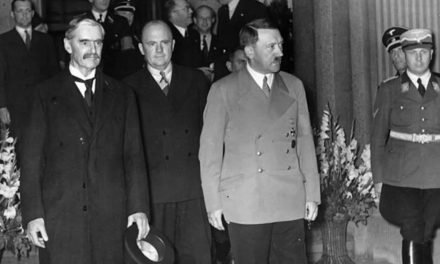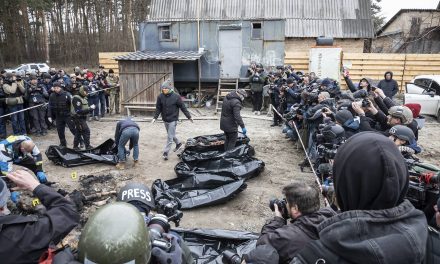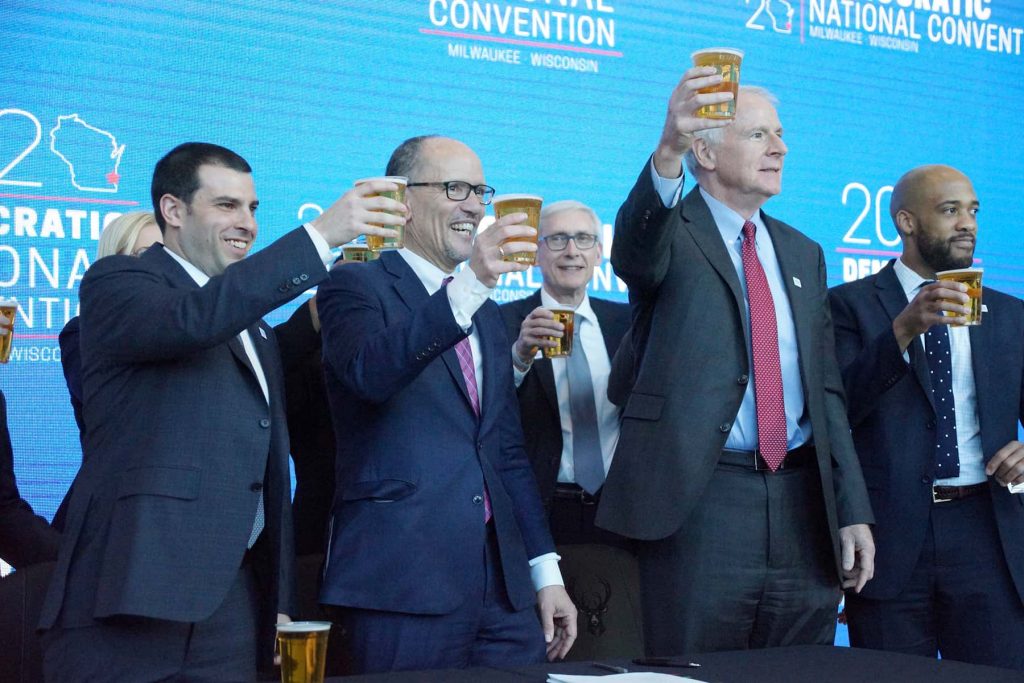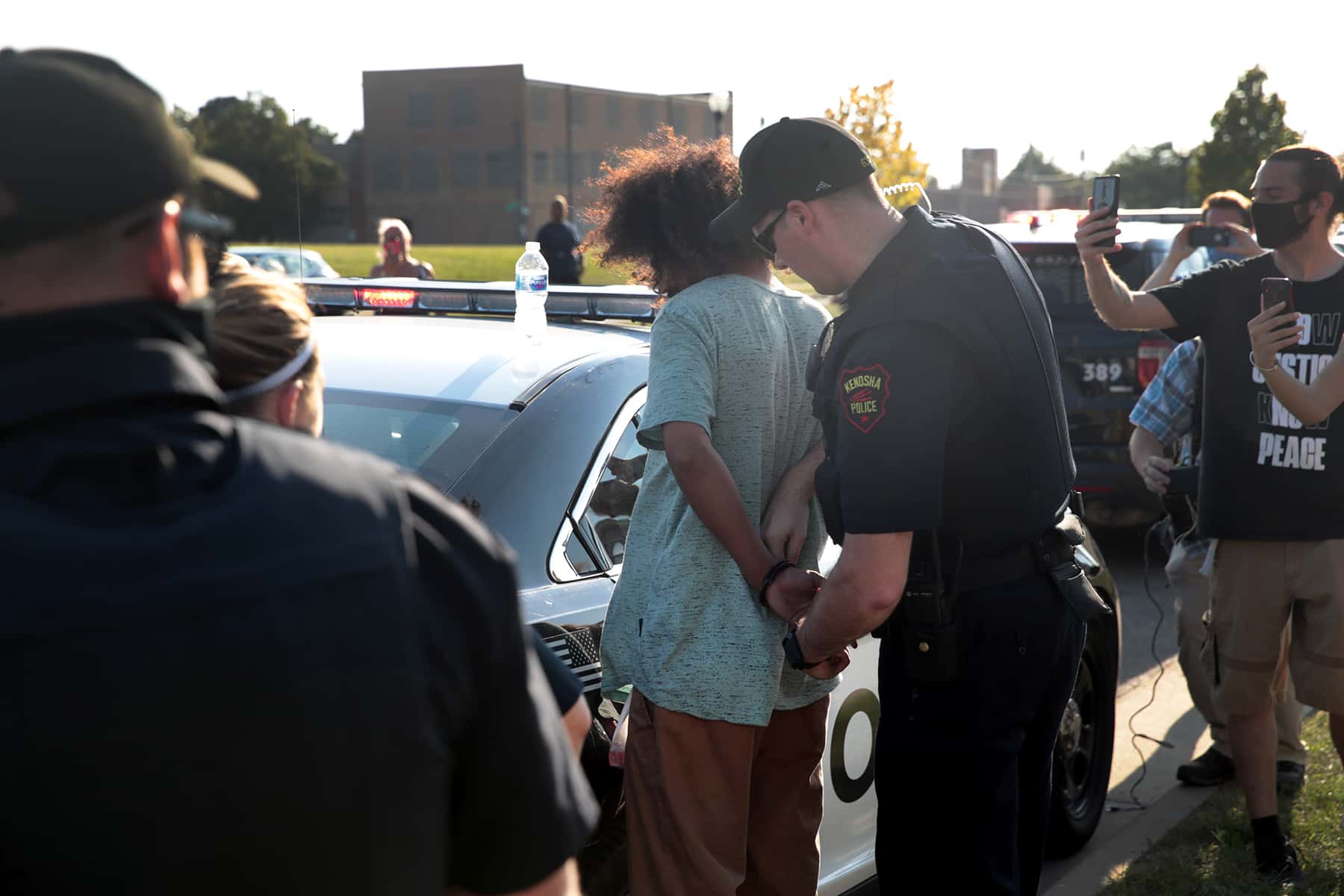
By John M. Eason, Associate Professor of Sociology; Benny Witkovsky, PhD Candidate; Chloe Haimson, PhD Candidate; Jungmyung Kim, PhD Candidate; University of Wisconsin-Madison
Kenosha, Wisconsin, became a national byword for racial unrest when protests in August erupted in violence. After local police shot a Black man, Jacob Blake, seven times in the back, leaving him paralyzed, furious residents took to the streets expressing years of pent-up anger. During nighttime hours, fires were set.
Law enforcement’s response only escalated the situation. One night an armed white militia showed up, and Kenosha officers thanked them. Then, at 11:45 p.m. on Aug. 25, a white teenager has been charged with firing an assault rifle during a confrontation, killing two protesters and wounding one.
Most anti-racism demonstrations across the United States last summer were fairly peaceful. What went wrong in Kenosha? Our research on Wisconsin’s changing demographics suggests racial integration and political polarization are a combustible combination in Kenosha.
Diversifying Wisconsin
Nationally, Wisconsin is generally perceived as white and working class. Historically that was largely true, and the state is still 81% white. But it’s changing fast. In 1980 Wisconsin had 25 small cities – those with populations of 20,000 to 100,000. Only three had populations that were more than 1% Black, and only two were more than 1% Asian American, according to census data. Latinos comprised 1% or more of the population in eight small Wisconsin cities in 1980.
By 2010, the number of small cities in Wisconsin had grown to 35, and few were all white anymore. Nine were more than 5% Black, 11 were more than 5% Asian and 19 of the 35 were more than 5% Latino.
These demographic shifts were greatest early this century. Between 2000 and 2010, Black people as a percentage of total population more than doubled in a dozen of Wisconsin’s small cities. In Milwaukee – the state’s largest, most diverse city – white people now comprise just 44% of the population.
Today Kenosha is one of Wisconsin’s most racially diverse small cities. Black people make up about 11.5% of its 100,000 people, and Latinos make up nearly 18%, according to 2018 population estimates. Only three similarly sized Wisconsin cities have more people of color.
‘You protect and serve who?’
Historically, white Americans have reacted with suspicion and hostility to the sudden arrival of Black people and immigrants to their neighborhoods. Integration is an American ideal – a high-minded recipe for combating racism that dates back to the 1950s. But research shows that even in multicultural communities, social segregation among community members of different racial backgrounds persists.
White residents who feel threatened may turn to law enforcement, as demonstrated in numerous recent nationwide incidents of white people reporting Black people to the police for barbecuing, selling lemonade and jogging in predominantly white neighborhoods.
To understand how this tension plays out in Wisconsin, the Justice Lab at the University of Wisconsin, where we work as sociological researchers, has been conducting interviews with police officers, residents and politicians in cities that have undergone such demographic and social changes.
University ethics requirements prohibit us from revealing identifying details about our study participants. But our work finds that Black residents of small cities like Kenosha, as in other large cities, overwhelmingly fear police.
“I’m afraid … they might come to the car, and just for some reason be scared that day, and any sudden movement they’ll think I’m holding a gun,” said a 29-year-old Black father we’ll call Dennis.
“You protect and serve who? Not me or mine,” he said. “Not none of us.”
A 2020 Pew Research survey found that 64% of Black American men said they have been unfairly stopped by the police.
‘They’re looking to stop you for anything’
In Kenosha, the police department grew as its community of color did. In 2007 Kenosha Police Department had 192 members. In 2013 it had grown to 198, according to Law Enforcement Management And Administrative Statistics data, an expansion of 3.1%. That growth exceeds the city’s overall population growth during the same period, which was 2.6%. Most Wisconsin police departments were shrinking at that time, even as the state’s population grew. According to the Kenosha Police Department’s 2014 annual report, the force needed more officers to meet growing demand for its services.
But violent crime in Kenosha has remained fairly stable for decades. Since 1990, the city has had three to five murders a year, according to the FBI’s Uniform Crime Report. And property crimes actually decreased by more than 25% between 2007 and 2013. Yet during the same period, the Kenosha police budget rose from about $23 million to nearly $27 million.
Scores of studies from across the U.S. have documented this phenomenon: When Black and Latino populations rise, white residents tend to respond by increasing the funding and size of local law enforcement agencies, independent of crime rate. Social scientists call this the “racial threat hypothesis.”
Putting more officers on the street to do community policing when there’s no rise in crime creates the potential for more routine interactions between police and civilians – and for people of color, more potential conflict.
Leslie, a mother of two sons, told us that police once stopped her son and his friend while driving one night, “talking about his license plates don’t match his car.”
Leslie said she knows that’s not true because she and her husband had recently bought the car for their son and registered it in their name. Her perception: “No, you pulled him over because you were hoping that you had two black kids and when they rolled down the windows you would smell weed,” she said.
Leslie advises Black acquaintances not to drive into nearby largely white neighboring cities.
“They’re looking to stop you for anything,” she said of police.
Police and politics
Racial tension may be exacerbated when a city is also marked by strong partisan divisions, our research suggests. Kenosha has been solidly Democratic for several decades, but about a third of its residents vote Republican, according to state election records. Republicans and Democrats tend to live side by side, not segregated by partisan affiliation, community data shows.
That setup can pit neighbor against neighbor after events like police killings. Republicans are far less likely than Democrats to see racial bias in law enforcement as a problem, according to Pew Research. Donald Trump has stoked such tensions throughout his presidency, vilifying Black Lives Matter and exalting law enforcement. The day before the 2020 election, he held a rally in Kenosha, declaring he had brought “law and order” to the city.
Trump narrowly lost Wisconsin, including Kenosha. Joe Biden’s presidency will change the national debate on police violence, but it will not stop the seismic demographic shifts creating unease in Wisconsin’s small cities.
Scоtt Оlsоn
Originally published on The Conversation as Wisconsin’s not so white anymore – and in some rapidly diversifying cities like Kenosha there’s fear and unrest
Support evidence-based journalism with a tax-deductible donation today, make a contribution to The Conversation.

